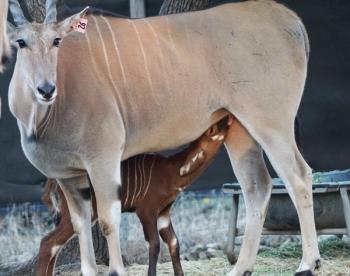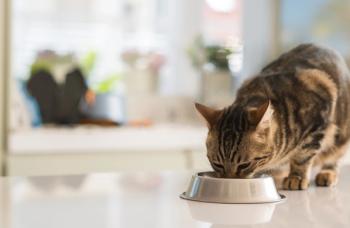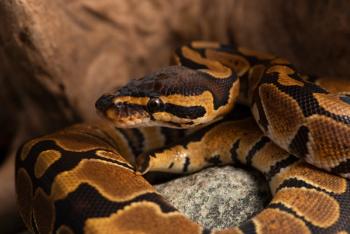
Avian respiratory medicine (Proceedings)
Respiratory disease is relatively common in companion birds.
Avian respiratory medicine
Respiratory disease is relatively common in companion birds. A successful treatment outcome relies on a rapid diagnosis, yet understanding the complexities of the anatomy and physiology of the respiratory system and respiration and birds can be challenging. The avian respiratory system differs greatly from mammalian species, and these differences pose significant challenges to the diagnosis and treatment of respiratory disease in birds.
Before getting started, first observe the bird carefully from a distance for evidence of dyspnea such as tail bobbing, wing flaring, extending of the neck, and open-mouth breathing. Observe for coughing and sneezing and changes in the character of the voice. All birds will become stressed during handling restraint, which can greatly increase the respiratory rate and effort. Observe how quickly the bird recovers from handling.
Upper respiratory tract
The upper respiratory tract in birds consists of the nasal cavity and infraorbital sinus. For the purpose of this presentation, the larynx and glottis will be discussed in the lower respiratory tract section.
Nasal cavity
Anatomy
The avian nasal cavity consists of the nostrils (external nares), opercula, nasal septum, nasal conchae (rostral, middle, and caudal), and choana. In parrots, the nares are typically located dorsolaterally at the base of the maxillary beak. In budgerigars (Melopsittacus undulatus) and a few other psittacine species, a section of raised, colored skin called the “cere” surrounds the nares. Just within the nostril opening, a keratinized vascularized flap of tissue called the operculum is visible. Within the nasal cavity, the cartilaginous to bony nasal septum and conchae direct the flow of air ventrally towards the choanal slit and caudally to enter the infraorbital sinus. The movement of air through the nasal cavity allows for olfaction, air filtration, water conservation, and thermoregulation. The choanal slit in psittacine species is rimmed with papillae, which is believed to help prevent food from entering the nasal cavity.
Examination and diagnostic tests
Inspect the nares with a bright light and magnification. Observe for swelling, redness, distortion, discharge, matted feathers, and obstruction from debris or foreign material. Examine the choanal slit and papillae for swelling, redness, bleeding, foreign objects, and blunting of the papillae. The most useful diagnostic test to evaluate the nasal cavity is the nasal flush, which can be both diagnostic and therapeutic. Approximately 2 to 5 ml/kg of warm buffered crystalloid solution (eg. sterile saline) is instilled into each nostril while the head of the bird is directed downwards to prevent aspiration. Fluid can be collected into a sterile container as it drains through the choanal slit into the oral cavity. Fluid should also flow through the contralateral nostril. Resistance to flow suggests obstructive disease. Examine the collected fluid for blood, mucus, and purulent debris. The fluid can be further evaluated through cytology and special stains and microbiologic culture. A swab can also be collected from the rostral sulcus of the choanal slit. Plain and contrast skull radiography and advanced imaging such as computed tomography (CT) and magnetic resonance imaging (MRI) can be helpful in assessing the bony and soft tissue structures of the avian nasal cavity.
Selected diseases and treatments
Rhinitis
Inflammatory and infectious disease of the nasal cavity. Bacterial and mycotic rhinitis are common in companion birds. Viral infections such as pox and herpesvirus are less common. Hypovitaminosis A, common in parrots fed a seed-based diet, causes squamous metaplasia of epithelial linings including those of the nasal cavity, predisposing to opportunistic infections. Other causes include nasal foreign bodies, trauma, and neoplasia. Clinical signs include sneezing, matted feathers around the nostrils, redness and swelling or occlusion of the nares, and sinus flaring. Chronic infections can lead to disfiguration of the nares and beak. Treatment options include nasal irrigation and debridement, topical or systemic antimicrobials based on results of culture and sensitivity, and dietary modification.
Rhinoliths
Nasal concretions of debris and infectious agents such as fungal organisms and opportunistic bacteria. Hypovitaminosis A is believed to be a predisposing factor. Rhinoliths are often chronic and insidious and can erode through musosal linings and bone into the infraorbital sinus. Clinical signs include nasal swelling and occlusion, as well as epiphora from lacrimal gland obstruction and sinus flaring. Rhinoliths can become mineralized and visible on survey radiographs. Rhinoliths can be manually debrided. Sedation or anesthesia is advised for larger rhinoliths. Cultures should be done and antimicrobial therapy is generally advised, based on sensitivity results. Erosions to the nasal cavity and sinus are permanent, and birds are prone to recurrent debris accumulation and opportunistic infections. Birds should be returned for periodic monitoring, and clients can be instructed on how to perform periodic nasal irrigation at home.
Choanal atresia
Congenital imperforate communication between the nasal cavity and choana. Most often reported in African grey parrots (Psittacus erithacus). Clinical signs include chronic nasal drainage and opportunistic infections. Diagnosis is best made through contrast skull radiography or advanced imaging. Treatment is surgical with appropriate antibiotic therapy.
Infraorbital sinus
Anatomy
The nasal cavity communicates caudodorsally with the infraorbital sinus through small openings. There is a single infraorbital sinus on each side, but there are numerous diverticulae, including the rostral, preorbital, infraorbital, postorbital, and mandibular diverticulae. Caudally, the infraorbital sinus communicates with the cervicocephalic air sac, which is not involved in gas exchange. The right and left infraorbital sinuses communicate in psittacine species.
Examination and diagnostic tests
Observe for flaring of the preorbital diverticulae with breathing. Observe for periorbital and preorbital sinus swelling. Palpate these areas for masses or fluid accumulation. The most useful test to evaluate the infraorbital sinus is the sinus aspiration and lavage. A small gauge hypodermic or butterfly needle is inserted into the preorbital diverticulum dorsal or ventral to the jugal arch. An oral speculum can be used to increase the size of the space. Fluid can be aspirated, or instilled and drained for diagnostic purposes. Radiography, ultrasonography, and advanced imaging such as CT and MRI can also be useful in the diagnosis of sinus disease in birds.
Selected diseases and treatments
Sinusitis
Inflammatory and infectious disease of the nasal cavity. Similar etiology to rhinitis, often occurs simultaneously with rhinitis. Clinical signs can include sneezing and nasal discharge, facial swelling, sinus flaring with breathing, periorbital swelling, and epiphora. Treatments often include systemic antimicrobial therapy, sinus irrigation, and sinus surgery.
Sinoliths
Concretions of cellular debris and infectious agents can accumulate in one or more of the sinus cavities. Over time these concretions can become mineralized. Surgical removal has been described, although surgery can prove challenging and require bony trephination for sinoliths in the rostral diverticulum.
Cervicocephalic air sac hyperinflation
While not a true disease of the infraorbital sinus, it is often associated with occlusion of the communication with the sinus. Hypovitaminosis A is believed to be a predisposing cause. Clinical signs include an air-filled swelling of the neck, and often these swellings can be enormous. The swelling must be differentiated from crop dilation. The swelling is not considered painful and can be left alone, or punctured and temporarily glued open. Stent placement has been described but often quickly fails.
Lower respiratory tract
The lower respiratory tract consists of the larynx and rima glottis (for this discussion), trachea, syrinx, lungs, and air sacs.
Anatomy and respiration
The opening of the larynx, or rima glottis, lacks an epiglottis in birds. The larynx does not produce sound; rather, the syrinx at the bifurcation of the trachea to the primary bronchi performs this task. The larynx lies up against the choana during breathing at rest, allowing air to flow through the nasal cavity and choanal slit into the trachea. Tracheal rings are complete in birds, unlike mammals, and can ossify in some adult birds, even to the point of containing marrow. The lungs are rigid and do not expand. There are four paired air sacs (cervical, cranial and caudal thoracic, and abdominal) and one unpaired air sac (clavicular). The air sacs are thin walled and are not involved in gas exchange. Some bones such as the humeri are pneumatized and communicate with the air sacs through diverticulae. Birds lack a diaphragm, and inspiration and expiration are active events.
Respiration is a two-breath system in birds. During inspiration, half of the inspired breath of air moves into the lungs without gaseous exchange (neopulmonic parabronchi) and the other half moves into into the caudal air sacs. Air that is already in the lungs moves into the cranial air sacs. During expiration, air moves from the caudal air sacs into the lungs (paleopulmonic parabronchi) for gas exchange, and air in the cranial air sacs leaves through the trachea. Cross-current exchange of gas occurs between the air and blood capillaries, which is a highly efficient system in birds for exchanging oxygen and carbon dioxide.
Examination and diagnostic tests
Observe the larynx and rima glottis with a bright light and magnification. If necessary, gauze loops can be used to open the beaks. Palpate the cervical trachea. Auscult the coelomic cavity over the keel and over the back. A tracheal wash with 0.50 to 1.0 ml/kg of sterile saline solution can be useful to collect diagnostic samples of the trachea, syrinx, and primary bronchi. These airways can often be visualized endoscopically. A rigid 1.9- or 2.7-mm telescope can be used to visualize the trachea in syrinx in birds greater than 200 grams body weight. A bronchoscope can occasionally be of use in larger birds. An air sac cannula is often necessary to provide gas anesthesia and oxygen during airway endoscopy. Laparoscopy is useful to assess the lungs and air sacs and to collect diagnostic specimens such as lung biopsies. Survey radiographs are very useful in assessing the lower respiratory system in birds.
Selected diseases and treatments
Tracheal obstruction
Occasionally birds will aspirate seed hulls or whole seeds, which can become lodged in the trachea. Fungal granulomas will often grow within the lumen of the larger airways, causing obstruction. Transilluminate the trachea to screen for a tracheal foreign body. Obstructions rarely are visible on survey radiographs; endoscopy is the diagnostic tool of choice and can also be used to debride fungal granulomas or remove foreign objects. An air sac cannula may be necessary to bypass the larger, obstructed airways.
Aspergillosis
Opportunistic fungal infections in the airways, lungs, and air sacs are not uncommon and usually associated with Aspergillus spp. Birds can be affected by the mechanical obstruction of a granuloma in a larger airway or be systemically ill due to circulating mycotoxins. Definitive diagnosis is through collection of plaques and granulomas and lung biopsy, and cytology and culture. Tracheal wash samples are often negative for infection. Treatment options include debridement and local and systemic antifungals. The prognosis is generally guarded at best.
Chronic obstructive pulmonary disease (COPD)
Also known as macaw pulmonary hypersensitivity, macaw asthma, macaw polycythemia, and macaw pneumonitis, this disease is most commonly seen in blue and gold macaws (Ara ararauna). Relative secondary polycythemia is a common finding. Exposure to powder-producing birds such as cockatoos (Cacatua spp.) and African grey parrots is believed to be a predisposing cause. Clinical signs include exertional dyspnea, cyanosis, and a dry, non-productive cough. Definitive diagnosis is through endoscopic lung biopsy. Treatment is aimed at improving air quality, removing potential allergens, treating secondary opportunistic infections. Prolonged treatment with systemic corticosteroids is not generally advised in birds due to the risks of severe immunocompromise.
Chronic pulmonary interstitial fibrosis (CPIF)
Chronic pulmonary interstitial fibrosis (CPIF) is a chronic, progressive disease reported in Amazon parrots (Amazona spp.) and other psittacine species associated with loss of normal pulmonary architecture due to pulmonary inflammation and fibrosis and congestion of pulmonary capillaries. These changes result in large, air-filled caverns in the pulmonary tissue. Reported clinical signs include exercise intolerance, and relative polycythemia is common. The etiology is unknown, although airborne toxins, hypersensitivity disease, and viral infections have been speculated as possible causes associated with CPIF. Diagnosis is rare pre-mortem, although a lung biopsy should be diagnostic. No effective treatments have been reported.
Neoplasia
A number of respiratory neoplasms have been reported in birds. Moluccan cockatoos (Cacatua moluccensis) appear over-represented for a form of air sac cystadenocarcinoma that invades through the wall of the humerus, forming a cystic mass under the skin in the axillary region. Cockatiels (Nymphicus hollandicus) appear susceptible to a unique undifferentiated carcinoma of pulmonary or thymic origin. Other respiratory neoplasms have been reported in birds, including bronchogenic carcinoma and pulmonary fibrosarcoma.
Suggested reading
Artmann A, Henninger W. Psittacine paranasal sinus: A new definition of compartments. J Zoo Wildl Med 2001;32(4):447–458.
Garner MM, Latimer KS, Mickley KA, et al. Histologic, immunohistochemical, and electron microscopic features of a unique pulmonary tumor in cockatiels (Nymphicus hollandicus): Six cases. Vet Pathol 2009;46:1100–1108.
Hernandez-Divers SJ. Endosurgical debridement and diode laser ablation of lung and air sac granulomas in psittacine birds. J Avian Med Surg 2002;16(2):138–145.
King AS, McLelland J. Birds – Their Structure and Function. Baillière-Tindall, London, UK, 1984.
Lennox AM, Nemetz LP. Tracheostomy in the avian patient. Semin Avian Exot Pet Med 2005;14(2):131–134.
Noonan BP, de Matos R, Butler BP, et al. Nasal adenocarcinoma and secondary chronic sinusitis in a hyacinth macaw (Anodorhynchus hyacinthinus). J Avian Med Surg 2014;28(2):143–150.
Orosz SE, Lichtenberger M. Avian respiratory distress: Etiology, diagnosis, and treatment. Vet Clin No Amer Exot Anim 2011;14(2):241–255.
Sykes JM, Neiffer D, Terrell S, et al. Review of 23 cases of postintubation tracheal obstructions in birds. J Zoo Wildl Med 2013;44(3):700–71.
Tully TN, Harrison GJ. Pneumonology. In: Avian Medicine: Principles and Application. Ritchie BW, Harrison GJ, Harrison LR (eds). Wingers Publishing, 1994:556-581.
Verstappen FA, Dorrestein GM. Aspergillosis in Amazon parrots after corticosteroid therapy for smoke-inhalation injury. J Avian Med Surg 2005;19(2):138–141.
Zandvliet MMJM, Dorrestein GM, van der Hage M. Chronic pulmonary interstitial fibrosis in Amazon parrots. Avian Path 2001;30(5):5
Newsletter
From exam room tips to practice management insights, get trusted veterinary news delivered straight to your inbox—subscribe to dvm360.






